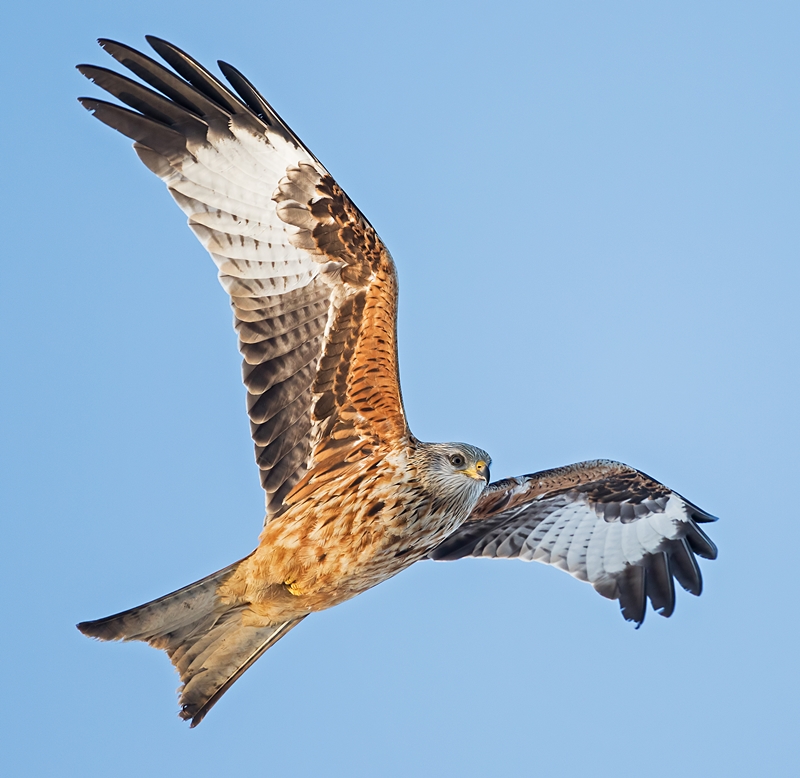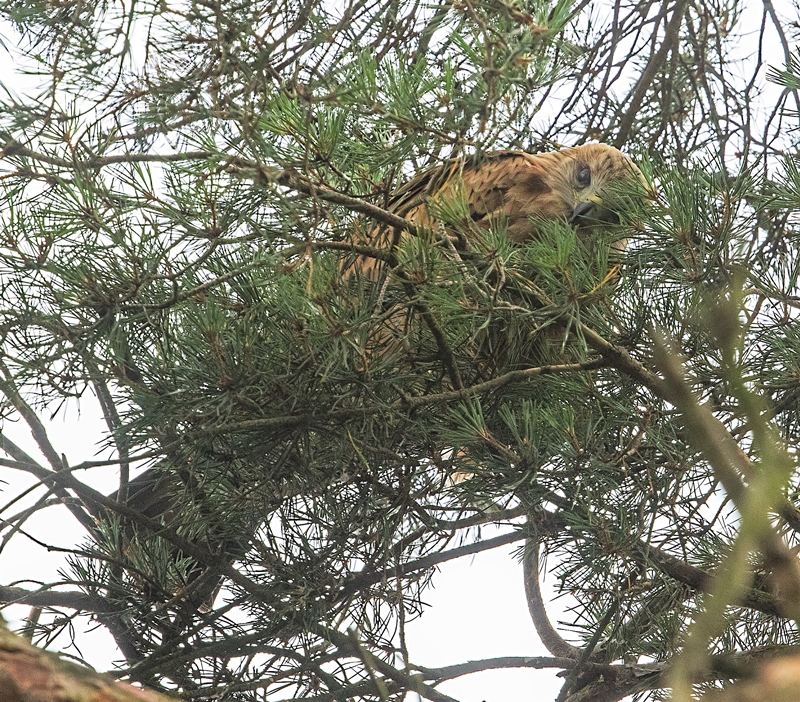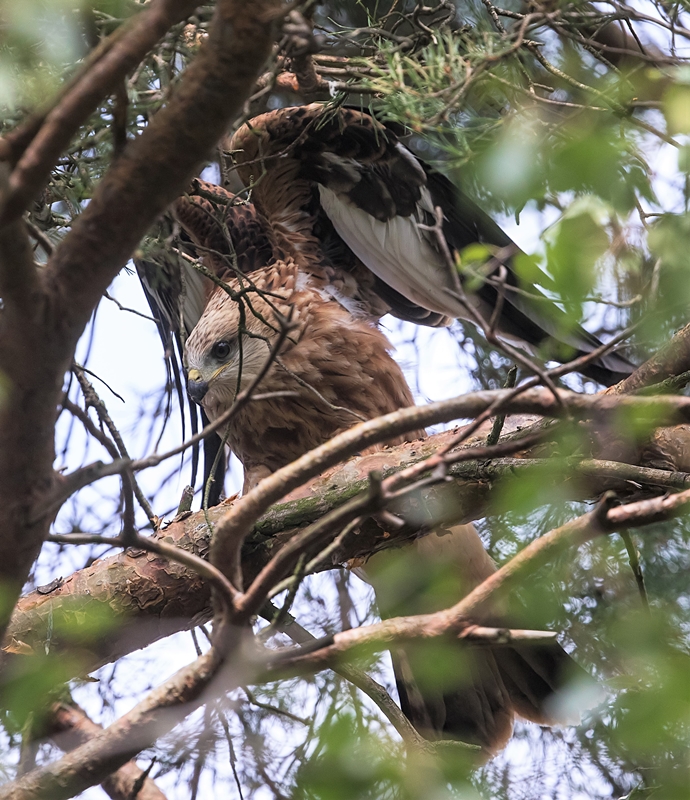Hemingford Abbots, 23 July 2020
This contribution results from the garden visit referred to in ‘The Hemingford Fox’ (3 July 2020).

Photograph by Nigel Sprowell
Red Kites are now seen readily across the UK with a current population of some 10,000 birds, including about 2,000 breeding pairs. These birds have wonderful plumage, long broad wings and a flexible forked tail enabling them to twist and turn acrobatically as they soar high in the air with gentle mewing calls.
The birds have recovered to these numbers in only the last 30 years or so, thanks to a reintroduction programme. They were a regular sight in the Middle Ages clearing up food waste and other edible rubbish in the streets, but in more recent times they became persecuted and a target for egg collectors, and became practically extinct in the UK apart from a few pairs in Wales.
One of the reintroduction areas was Northamptonshire where they are now quite common, and as juveniles fledge they spread out to find new territories. The wooded areas along the Ouse Valley are becoming attractive to these birds and there are several nesting sites now in the Huntingdon and St Ives area.
Red Kites generally like to nest in the dense canopy of hardwood trees about 60 feet up, making them exceedingly difficult to see, let alone monitor. They make a large nest of twigs with soft materials for lining. Historically they were renowned for stealing linen for this purpose from washing lines! Shakespeare wrote in The Winter’s Tale ‘When the kite builds look for lesser linen’.
The birds usually lay one to three eggs in late March and after an incubation period of around 38 days they hatch and it then takes up to a further 60 days for the hatchlings to fledge, depending on the number of chicks. Their diet is mainly small mammals, mice, voles and worms plus a wide variety of carrion including the carcasses of dead birds, rabbits and roadkill.
A nest in the Hemingford area has been observed from a distance (and a long lens) and just recently two juveniles successfully fledged. They are likely to remain in the vicinity of the nest site for two to three weeks, practicing their flight skills and being fed by their parents who will also train them to fend for themselves.
 |
 |
 |
All photographs by Nigel Sprowell
The juveniles out of the nest now begin to wing stretch in preparation for flight.
The juveniles will then probably leave the area and seek territories of their own, sometimes returning to their original nesting area after a couple of years. The parents, who are monogamous, are likely to remain loyal to their nesting site if undisturbed, staying in the area and raising further broods in the future.
We will hopefully be able to enjoy more of these magnificent birds as they twist and tumble in the skies above us, as long as their delicate habitat remains protected!
Nigel Sprowell

